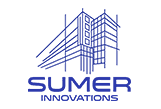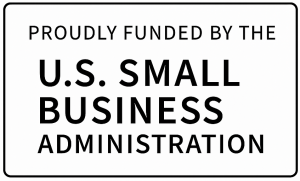If you’re new to Search Engine Optimization (SEO), conducting an on page SEO audit is a great way to enhance your website’s visibility and rankings. An audit helps you identify and fix issues on your website that may be hindering its performance in search results. With the right SEO tools, even beginners can uncover hidden opportunities to optimize their sites.
This guide will cover the essentials of on page SEO audit and demonstrate how to use SEO tools to get started.
What Is an OnPage SEO Audit?
An on page SEO audit involves reviewing web pages to assess whether they are optimized for search engines and user experience. It focuses on various controllable factors such as content quality, meta tags, URLs, links, and images. Regular audits can help you resolve technical issues, enhance search rankings, and improve overall website performance.
Why Are OnPage SEO Audits Important?
Improving search rankings is crucial because search engines need to understand your content to rank it effectively. Onpage SEO helps search engines comprehend your content better, which enables them to rank it appropriately.
An optimized website results in faster loading times, improved readability, and seamless navigation, all of which enhance user experience. Audits can help identify issues like errors, missing tags, duplicate content, or broken links—problems that can negatively impact your website’s performance. By addressing these gaps, you can optimize your site and improve its search rankings.
Staying relevant is essential due to the constantly changing algorithms of search engines. Audits ensure your web pages adhere to quality practices, keeping them relevant as search engines evolve.
Getting Started with OnPage SEO Audits
Here’s a step by step approach for beginners to conduct an effective website SEO audit using SEO tools:
- Identify Your Target Keywords: Think about the words and phrases potential customers might use to find your business online. Make a list of these keywords.
- Use a Keyword Research Tool: Check how often people search for these keywords. This insight will help you determine which keywords are most valuable for your business.
- Analyze Your Website’s Content: Ensure your web pages are optimized for your target keywords. Include these keywords in the page titles, descriptions, and body text.
- Check Technical SEO: Examine factors such as page speed, mobile friendliness, and the proper use of meta tags.
- Review Competitors’ Websites: Look at how competitors are using keywords and optimizing their content. This can provide ideas for improving your own website.
Remember that a successful SEO audit takes time and effort, but the rewards of higher search rankings and increased traffic to your business make it worthwhile.
1. Start with a Website Crawler
A website crawler functions like search engines do, identifying errors and opportunities for improvement on your site. This tool is essential for analyzing the technical aspects of your website.
Recommended Tool: Screaming Frog is a powerful SEO tool that crawls your website, helping you optimize it for search engines.
What It Does:
- Detects issues like broken links, duplicate content, and missing tags, allowing you to make necessary improvements.
- Analyzes web page titles, headers, and response codes, as well as the text within web pages.
- Provides a comprehensive report on your website, making it easier for users to navigate.
Action Step: Run a full scan of your website using Screaming Frog to identify any technical problems that need addressing.
2. Check Keyword Optimization
Keywords are fundamental to effective online SEO. Correct placement and optimization of keywords can significantly enhance your search rankings.
Recommended Tool: SEMrush. This tool allows you to assess your website’s performance against competitors and identify areas for enhancement.
What It Does:
- Analyzes how effectively you use important keywords in your content and meta tags and compares your performance to that of other websites.
- Identifies keyword gaps, highlighting new opportunities for content development.
- Suggests related keywords to further enhance your optimization.
Action Step: Use SEMrush to analyze your keyword usage and identify areas for improvement.
By following these steps and utilizing the recommended tools, you can effectively conduct an on page SEO audit and work towards ranking higher in search results.
3. Optimize Content Quality
Great content is not only about using the right keywords; it must also be engaging, easy to read, and valuable for customers.
Surfer is a tool designed for search engine marketing that can help enhance your online marketing efforts and improve your website’s search engine performance.
What It Does:
- Evaluates how your content ranks compared to competitors for the same keywords. This allows you to see your content’s performance against rival sites, helping you identify areas for improvement.
- Suggests optimal word counts, appropriate keyword usage, and proper content structure.
- Provides ideas to make your content more meaningful and relevant.
Action Step: Enter your content into Surfer’s Content Editor to optimize for clarity, formatting, and keyword relevance.
4. Analyze Meta Tags
Meta titles and descriptions are crucial for attracting customers and helping search engines understand your web page content.
Yoast is a recommended tool for WordPress users to enhance their website’s search engine performance.
What It Does:
- Checks the length and keyword usage in titles and descriptions.
- Flags missing or malformed meta tags.
- Provides real time optimization suggestions.
Action Step: Review your meta titles and descriptions to ensure they match your target keywords. Use the Yoast tool for assistance.
5. Evaluate Internal Linking
Internal hyperlinks improve website navigation and distribute link equity throughout your pages.
Ahrefs is a recommended tool for analyzing your website’s performance against others, helping you identify areas for improvement.
What It Does:
- Identifies pages with few or no internal links.
- Flags broken or outdated links, informing you which links need fixing to enhance your website’s performance.
- Suggests opportunities for adding links to relevant content.
Action Step: Use Ahrefs to analyze your internal links and add relevant hyperlinks to improve navigation and content discoverability.
6. Test Page Speed and Mobile Friendliness
Page speed and mobile usability are critical factors. Slow pages or poor mobile experiences can negatively impact your rankings and user satisfaction.
Recommended Tools: Google PageSpeed Insights and MobileFriendly Test. These tools measure how quickly your website loads and whether it performs well on mobile devices, allowing you to identify areas for improvement.
What They Do:
- Measure loading speeds and provide guidelines to optimize overall performance.
- Test your website on mobile devices to evaluate responsiveness across various screen sizes.
Action Step: Run your website through these testing tools, then implement suggestions such as compressing images or simplifying CSS and JavaScript files.
Tips for Effective OnPage SEO Audits
- Audit Regularly: Conduct audits every few months to stay ahead of potential issues and updates.
- Focus on HighImpact Pages: Start with the pages that receive the most traffic or conversions.
- Combine Tools: Utilize a mix of free and paid tools to cover all aspects of on page SEO.
- Action Step: Keep a record of changes made during the audit and track improvements over time.
Conclusion
Onpage SEO audits are essential for maintaining a healthy, high performing website. With the right tools like Screaming Frog, SEMrush, Surfer SEO, and Google PageSpeed Insights, even beginners can identify and resolve optimization issues effectively. By regularly auditing and improving your pages, you will not only enhance your search engine rankings but also provide a better experience for your audience.
Start your journey to enhance your website one page at a time. Boost your website’s visibility and performance with the Seosets.com Onpage SEO tool—Seosets.com! This tool can help you optimize your website effectively. Take the first step today to improve your website.




